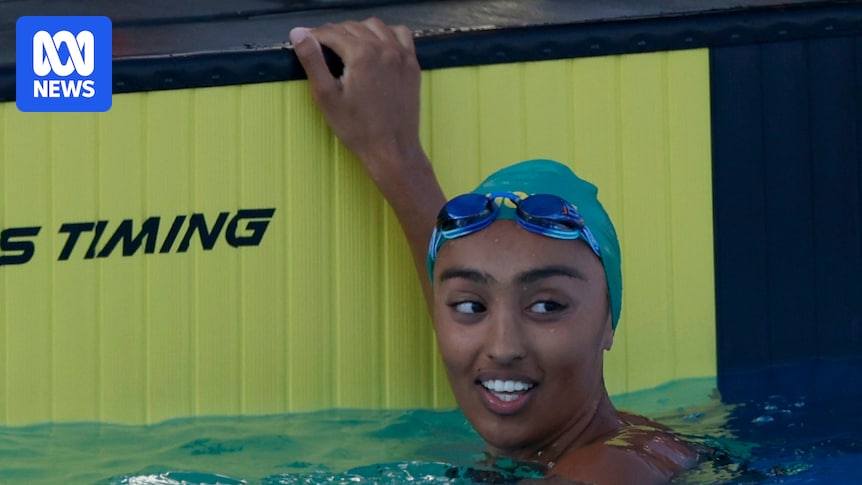
Nineteen-year-old Teagan Zurawel vividly recalls the challenges she faced managing her period while participating in Little Athletics. During competitions at her local Geelong center, she often found herself in a long queue for the only toilet equipped with a sanitary bin among a block of ten. The lack of a fixed timetable for events meant that she could be called to compete at any moment.
“You’d have to wait a while to get into that toilet,” Zurawel explained. “I started to worry I wouldn’t be able to change in time for my next event, because you’d have to keep an ear out for if your age group gets called while you’re in the bathroom. I had to go back and forth and just try and time it right.”
Zurawel’s experience is not unique. A recent survey conducted by Federation University revealed that over 61 percent of girls shared concerns about not having enough time to change their period protection. The study, which surveyed 464 Australian girls aged 10 to 16 involved in swimming and athletics, found that one in five considered dropping out of sports due to period-related challenges.
Decline in Participation Linked to Period Challenges
The survey further highlighted that 63 percent of respondents reported missing training sessions, and one in three sat out competition events. Many pointed to inadequate access to hygienic facilities and period protection as significant barriers. Lead author Jane Strachan expressed concern over these findings, noting the potential link to the dramatic decline in girls’ participation in sports by age 14.
“Absolutely, I think there’s a link,” Strachan stated. “One in five is a big enough number to warrant us looking seriously at this. It’s about population health. If adolescents stay in sport and remain physically active during those years, they’re much more likely to stay engaged with physical activity into adulthood and reap those health benefits.”
Statistics reveal that while 83 percent of Australian girls participate in sports at age nine, this figure plummets to 23 percent by age 15. The average age for a girl to experience her first period is around 12, coinciding with the drop in sports participation.
Challenges of Pain, Fatigue, and Fear of Leaking
The survey also found that approximately 90 percent of girls experienced disruptive symptoms such as fatigue, mood changes, and pain. A similar number worried about leaking through their uniforms. Semra Olowoniyi, a 20-year-old swimmer, shared her struggles with heavy periods and painful cramps at age 14, which often kept her out of school and swimming sessions.
“Obviously, as a 14-year-old it was so embarrassing being around other people when that happened,” Olowoniyi said. Swimmers wear race suits in competition, which can take 30 to 45 minutes to change, further complicating the issue.
Clare Burton, General Manager at Swimming Victoria, emphasized the importance of addressing these challenges. “If 63 percent of our girls aren’t turning up to training, they’re missing out on everything good that comes along with community sport,” she said. “They’re missing out on forming friendships that you can get for life. From a competition point of view, it has an impact on our high-performance pathways.”
Implementing Changes to Support Girls
Burton advocates for concrete actions to support girls in sports. Swimming Victoria has already taken steps by providing free tampons and pads in changing rooms at the Melbourne Sports and Aquatic Centre (MSAC) and introducing an inclusive swimwear policy that allows girls to wear two-piece suits during competitions. This allows those menstruating to wear ‘period’ underwear beneath their race suits.
Swimming Australia is also revising its coaching framework to educate entry-level coaches on how to discuss menstrual cycles with young girls. Additionally, discussions are underway to better schedule competition events, potentially grouping women’s events to allow more time for changing.
Little Athletics CEO Anthony McIntosh mentioned that athletics clubs could advocate for better facilities and equipment for women, moving away from white shorts to alleviate fears of leaking.
Addressing the Period Taboo
Despite these efforts, Burton believes the most significant change needed is cultural. “I wish it was easier for young girls to talk about their periods,” she said. “Being able to have the confidence to say, I’ve got my period today, and it not be a disaster.”
Strachan agrees, noting that the taboo surrounding periods persists. She points out that menstrual education in schools often segregates boys and girls, reinforcing the notion that periods are solely a ‘woman’s’ issue. Without adequate education, coaches may misinterpret girls’ absences from training or competition as laziness or lack of motivation, potentially affecting team selection.
“Everyone needs different levels of education, and it’s working out how we can support everyone to come on this journey,” Strachan says.
Both Olowoniyi and Zurawel emphasize the need for better education for coaches and men in general. Olowoniyi often worried about boys witnessing her bleed into the water, while Zurawel appreciated having a supportive female coach who provided sanitary products and snacks.
“My advice would be don’t try and make it awkward by making small talk, just get straight to the point, and have a spare pack of sanitary products in your bag just in case,” Zurawel advised.







